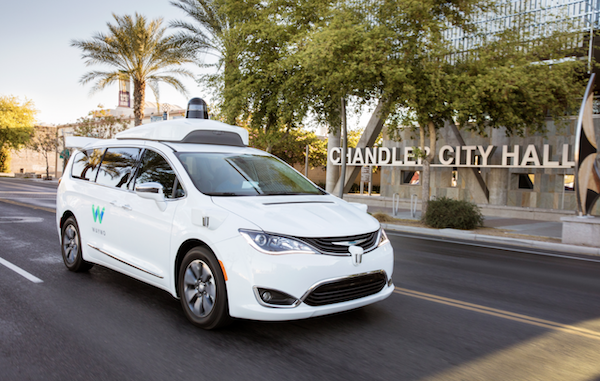
Google’s sibling company Waymo suggested its autonomous vehicles could have prevented deaths in real-life fatal crashes that occurred in Arizona over the past decade.
The autonomous driving subsidiary of Alphabet, Google’s parent company, released a study online March 8 where the analyzed how its autonomous driving system, the Waymo Driver, likely would have performed in fatal crashes that occurred in Arizona’s Maricopa county, where Waymo is testing its autonomous vehicles (AVs). National Highway Traffic Safety Administration statistics reveal Maricopa often makes the list of the highest annual pedestrian fatality rates every year, noted Trent Victor, Waymo’s director of safety research and best practices.
Waymo collected information on every fatal crash that took place in the Phoenix suburb of Chandler in Maricopa between 2008 and 2017. The company excluded crashes that did not match situations the Waymo Driver would face in the real world today, such as when crashes took place on streets where the company does not drive. The scientists then used this data to reconstruct each crash using best-practice methods and simulated how the Waymo Driver might have performed in each scenario.
The researchers started by simulating 72 fatal crashes as they occurred on public roads in Waymo’s operating domain, which covers thousands of miles of road in southeast Phoenix. Since many of these crashes involved two vehicles, they ran separate experiments simulating the Waymo Driver in the role of each vehicle. That resulted in 91 simulations in total.
“This is the first time an autonomous technology company has shared its evaluation for how the system might perform in real-world fatal crash scenarios,” Victor said in a statement.
When the Waymo Driver was placed in roles where it could have initiated these crashes, it avoided each one through consistent, competent driving, and obeying the rules of the road—yielding appropriately to traffic, keeping enough space between cars, and observing traffic signals. When tested in scenarios where it had to respond to other vehicles, it completely avoided 82 percent of simulated crashes and mitigated the severity of 10 percent of the crashes. The 8 percent of crash simulations where the Waymo Driver would not have made a difference involved the vehicle being struck from behind.
“While these are early results, and we are cognizant that they only represent one of many indicators that should be used for assessing our performance under real-world circumstances, we believe they demonstrate the potential of AV technology to improve safety,” Victor said in a statement. “Given that the version of the Waymo Driver we tested in simulation is the same version that we currently have on the road, these results are a testament not only to the capabilities of the Waymo Driver, but also to the rigor of our more than a decade of experience and our safety readiness framework.”

